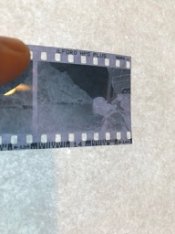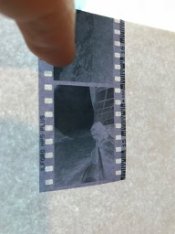Andrea - if your paper and chemicals are good, you shouldn't be having so much trouble getting a decent print. f2.8 at 30 sec is a long print time, unless you're making a big print or your negative is really overexposed and dense.
Take a digital snap of your negative held up against a daytime window, or against a bright light. To me, your shots look like they are underexposed, which gives muddy results like you see here. We can speculate about everything else, but seeing your negatives will go a long way for helping you with this.
You're right, here you can find two photos of both the frame i used to print: from my point of view, even I am a beginner, those are not so bad as to justify the result of the print. Beyond the first print, in which the enlarger lens was not in its optimal condition, in the second case I cannot figure out what's the problem.
About the chemicals and the paper I bought them less than one week ago from a shop that has a great material handling so, as I can just suppose, they sold me quite new chemicals/paper and not just the stock funds.
At 30 secs exposure at f2.8 I cannot help but feel that something is seriously wrong with the amount of light getting to the paper. What that might be, I have no idea. The negative image on the easel should be very strong at f2.8. I think you are saying that you exposed without any filtration so the paper should be giving you about grade 2 and the image of the girl on the boat suggests that a higher grade is needed as the contrast looks too low to me but for all I know if the correct amount of light was getting through to the paper the kind of "fog" I am seeing would disappear
I take it that the aperture on the enlarger lens hasn't stuck at say f11 or f16. Make sure that the lens' aperture is wide open at f2.8 and closes when you move through apertures.
Pentaxuser you're right too but I checked the whole lens and the aperture mechanism works quite well. Another doubt of mine was the lightbulb: I supposed the one inside the enlarger was dated and, after a quick research on the internet I found the equivalent type of bulb and replaced it but the light strength on the easel is quite the same as before.
I may also change that bulb with another one that i bought but this is a LED bulb, it has an higher Lumen rate but...who knows?
I am quite sure about the developing process: as previously said, with RC paper, 1.30min of dev, 10sec of stop bath and 30sec of fix: I followed the Ilford suggestion for that. Do you have another?
Thanks again and have a good day















